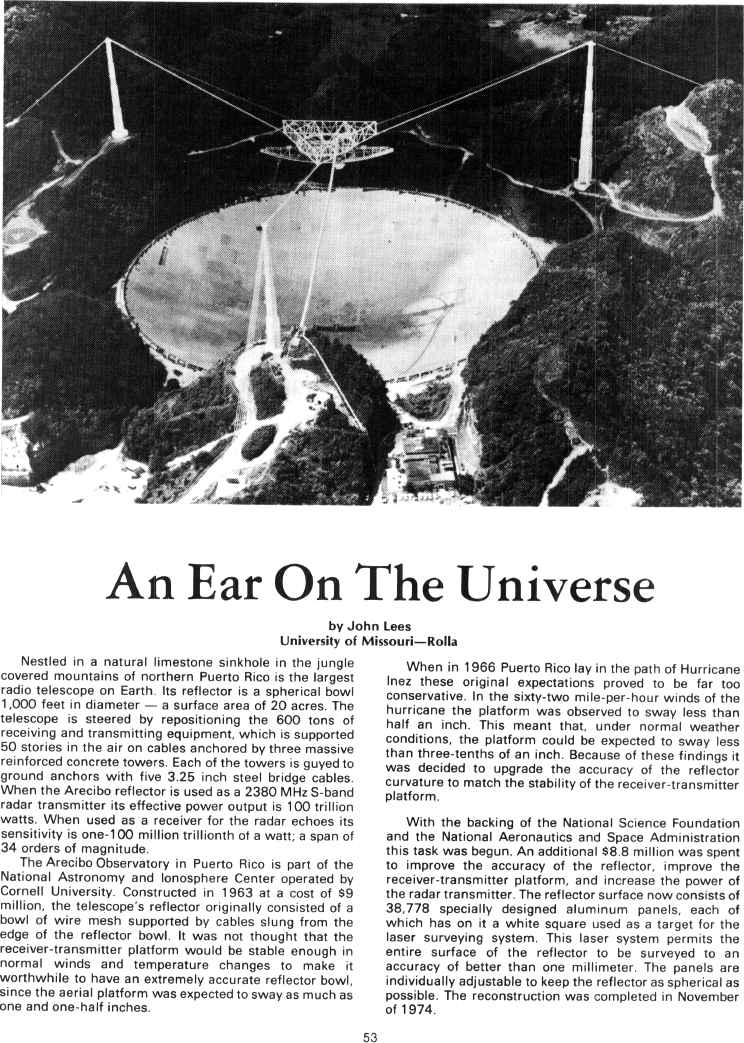by John Lees

An Ear n The Universe by John Lees University of Missouri-Rolla Nestled in a natural limestone sinkhole in the jungle covered mountains of northern Puerto Rico is the largest radio telescope on Earth. Its reflector is a spherical bowl 1,000 feet in diameter - a surface area of 20 acres. The telescope is steered by repositioning the 600 tons of receiving and transmitting equipment, which is supported 50 stories in the air on cables anchored by three massive reinforced concrete towers. Each of the towers is guyed to ground anchors with five 3.25 inch steel bridge cables. When the Arecibo reflector is used as a 2380 MHz S-band radar transmitter its effective power output is 100 trillion watts. When used as a receiver for the radar echoes its sensitivity is one-100 million trillionth ot a watt; a span of 34 orders of magnitude. The Arecibo Observatory in Puerto Rico is part of the National Astronomy and Ionosphere Center operated by Cornell University. Constructed in 1963 at a cost of $9 million, the telescope's reflector originally consisted of a bowl of wire mesh supported by cables slung from the edge of the reflector bowl. It was not thought that the receiver-transmitter platform would be stable enough in normal winds and temperature changes to make it worthwhile to have an extremely accurate reflector bowl, since the aerial platform was expected to sway as much as one and one-half inches. When in 1966 Puerto Rico lay in the path of Hurricane Inez these original expectations proved to be far too conservative. In the sixty-two mile-per-hour winds of the hurricane the platform was observed to sway less than half an inch. This meant that, under normal weather conditions, the platform could be expected to sway less than three-tenths of an inch. Because of these findings it was decided to upgrade the accuracy of the reflector curvature to match the stability of the receiver-transmitter platform. With the backing of the National Science Foundation and the National Aeronautics and Space Administration this task was begun. An additional $8.8 million was spent to improve the accuracy of the reflector, improve the receiver-transmitter platform, and increase the power of the radar transmitter. The reflector surface now consists of 38,778 specially designed aluminum panels, each of which has on it a white square used as a target for the laser surveying system. This laser system permits the entire surface of the reflector to be surveyed to an accuracy of better than one millimeter. The panels are individually adjustable to keep the reflector as spherical as possible. The reconstruction was completed in November of 1974.

